
Among all the MLM companies that I have given reviews on, none has been as controversial as this one that I am about to review on. LuLaRoe is a fairly young MLM business but has quickly gained notoriety for many issues. Let’s begin the review now . . .
What Is LuLaroe MLM?
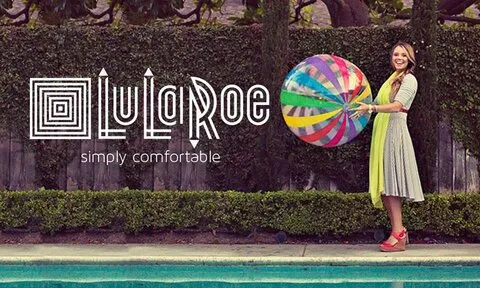
LuLaRoe is a multilevel marketing company headquartered in the United States that sells women’s and kids’ clothes. Deanne Brady and her husband Mark Stidham founded it in 2013, and the company is now headquartered in Corona, California.
As an MLM business, they recruit retailers (dubbed “fashion consultants” by the company) to sell its products directly to customers, mostly through social media. They generated nearly US$1 billion in revenue in 2016, making it one of the biggest multilevel marketing companies at the time, and by 2017, the business had approximately 80,000 independent dealers selling its clothing.
The brand’s fashion consultants and consumer groups have criticized the business and filed lawsuits against it for various issues, including its business model and product quality and design concerns.
The entity was even accused of being a pyramid scam in a class action case brought in California in October 2017 and a lawsuit filed by the Washington State Attorney General in January 2019.
Deanne Stidham and LuLaRoe History
On May 1, 2013, LuLaRoe became a legal corporate entity. Deanne’s first three granddaughters’ names, Lucy, Lola, and Monroe, were combined to form the company’s name. Deanne is a member of The Church of Jesus Christ of Latter-day Saints, and her decision to start the business was influenced by her desire to provide many opportunities for modest clothes.
LuLaRoe MLM expanded its product portfolio in 2014 to include skirts and dresses. They debuted a line of buttery soft leggings in mid-2014, which would become the company’s most popular product. They made $9.8 million in revenue with 23 employees and 750 resellers. They had 2,000 resellers by July 2015. LuLaRoe’s CEO Mark Stidham said in an August 2016 interview that they were on target to reach $1 billion in revenue, had 26,000 resellers, and sell nearly 350,000 items a day. They had over 80,000 resellers by April 2017.
LuLaRoe Quick Facts
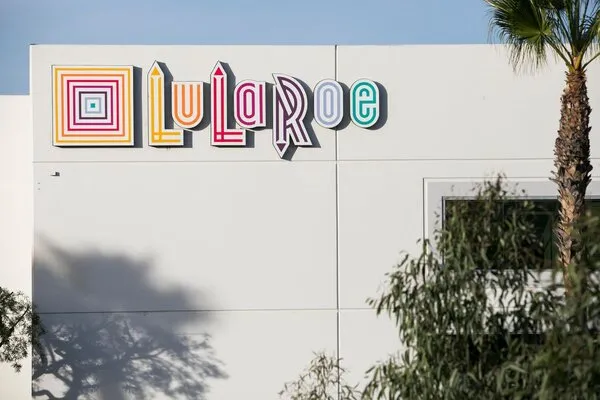
Website: https://www.lularoe.com/
Company Started: 04/30/2013
Founder: Deanne Brady and Mark Stidham
Company Address: 830 E Parkridge Ave Corona, CA 92879-6611
Phone No. : (951) 737-7875
Industry: Women’s Clothing, MLM
BBB Rating: Not Accredited
LuLaRoe Products Review
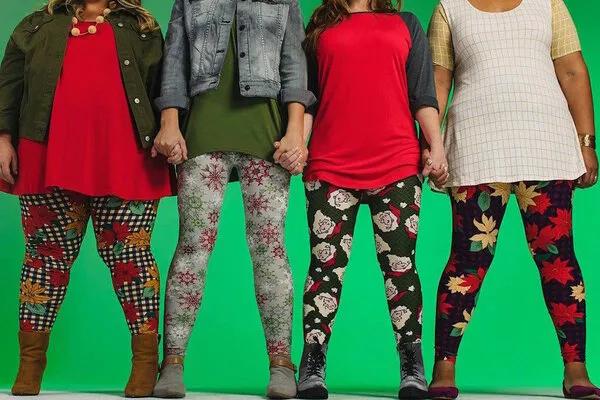
Brightly patterned leggings, tops, and dresses are LuLaRoe’s core products. Because of the Stidhams’ connection with The Church of Jesus Christ of Latter-day Saints, the company’s clothing leans toward modesty. They only produce 5,000 versions of each pattern, and once they’re sold out, they’re usually not reissued. LuLaRoe resellers have various styles and sizes to pick from, but not specific patterns, and each distributor’s inventory is different. According to them, some styles (dubbed “unicorns”) are significantly easier to sell than others.
MyDyer, a clothing manufacturer based in Los Angeles that also produces for other retailers, manufactures the garments in Asian and Central American factories.
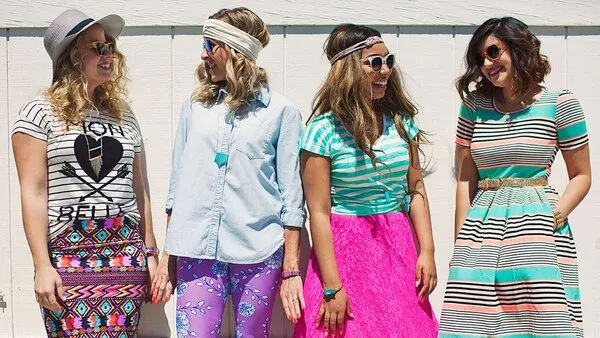
LuLaRoe Return Policy Complaints
In 2016, customers started reporting that LuLaRoe’s leggings tore and formed holes easily, in some cases shortly after the leggings were used for the first time. The BBB downgraded the company’s ranking to “F” in January 2017 due to the company’s failure to respond to grievances, as well as problems with collecting sales tax in areas where there is no sales tax on cloth. Customers have posted photographs of the torn leggings on social media. A Facebook group dedicated to the grievances grew to 16,000 members by March 2017, the same month a group of customers filed a class action case against them. The damage was caused by a manufacturing process that weakens the fibers while softening them, according to LuLaRoe’s head of production.
The social media group had 26,000 members by April. LuLaRoe’s CEO initially dismissed the damage rates as statistically negligible. After receiving feedback, they introduced new policies on April 24, 2017, to make it easier for customers and resellers to collect refunds on faulty products. As of May 2017, the BBB ranking was still “F.”
Multiple distributors protested on social media in August 2017 that they have yet to collect the refunds offered by LuLaRoe. In September, LuLaRoe suddenly terminated the changes to its return policy, which it had referred to as a “waiver.” Consultants now receive just 90% of the cost and must pay for shipping and handling, among other stricter requirements. The policy change sparked outrage on social media, prompting a petition to reinstate the old policies for consultants who were in the process of revoking their distributorships. Some retailers complained in March 2018 that they hadn’t received their refund checks for returns made under the April 2017 policy.
As of June 2020, LuLaRoe received a B- grade with the Better Business Bureau.
How Much Money Do Lularoe MLM Consultants Make?
MLMs must file a document in the U.S. that shows how much a consultant or salespeople can expect to earn. LulaRoe MLM only keeps track of bonus payments for this document, which suggests that 72.63 % of their independent retailers in the U.S. were left out in their Income Disclosure Statement. They only serve a consultant who has sponsored at least one other independent fashion consultant and has fulfilled personal production requirements to be eligible for bonuses. That suggests that, whether they make any money at all, most independent retailers in the United States profited solely from their retail sales to customers (if profits were made at all).
However, if you’ve built a high-performing team, they will give those leaders “bonus payments.” The average annual bonus payment was $2,064.77 (roughly $172 a month), according to LulaRoe’s 2016 Income Disclosure Statement.
Those figures are only “averages.” Nevertheless, what is the maximum potential? The biggest bonus payments, according to the same disclosure statement, are as follows:
- Sponsor: $44,542.23
- Trainer: $231,132.95
- Coach: $888,005.01
- Mentor: $2,472,957.68
To put this into context, 66.9% of those who earn monthly bonuses receive less than $1,000, with the majority earning between $250.01 and $500. To put it another way, getting to those maximum numbers is far from normal.
Is Selling LuLaRoe Worth It?
Unless you are a big fan of their merchandise and have a deep pocket to invest in, selling LuLaRoe is not worth your time and money, in my personal opinion. You will get a better return on investment in other MLMs.

How Do You Sell LuLaRoe?
You can sell through social media group pages or sell through your own blog/website. You can also make offline sales. Some resellers choose to operate only online, while others thrive operating both online and offline.
Do I Need To Keep An Inventory Of LuLaRoe Products To Sell?
Yes! Yes! Yes!

Is LuLaRoe an MLM?
Yes, it is. LuLaRoe sells its clothing exclusively through an MLM consultant. These fashion consultants buy wholesale from them and then resell it to customers. Resellers must buy an initial shipment of clothing and marketing materials costing between $4,925 and $9,000 (as of 2017) and are advised to maintain about $20,000 worth of stocks.
A LuLaRoe Consultant can earn money from two different sources: direct sales to consumers and a commission based on sales generated by “downline” consultants they recruit. According to the company’s income disclosure statement, downline consultants earned an average of $85 in annual commission in 2015.
LuLaRoe consultants sell their products through a party plan, pop-up boutiques, or private Facebook groups. Their consultants also use live-streaming footage to show their new stocks to members of their Facebook community at a planned online event, with the seller appearing on-screen to show and describe each product.
LuLaRoe consultants are more likely to be found in poorer rural areas than in urban areas. LuLaRoe reports ten consultants in Manhattan (population 1.6 million) and ten consultants in Pueblo, Colorado (population of 110,000), according to Quartz news organization. This is similar to other contemporary MLMs, which have clustered in rural areas that have taken longer to recover from the 2008 financial crisis.
Have There Been Any Lawsuits Involving LuLaRoe?

Customers filed a class-action lawsuit against them in early 2017, alleging that the company’s proprietary point-of-sale software wrongly calculated sales tax rates on interstate sales and in areas where apparel is not taxed. The company’s Better Business Bureau (BBB) ranking was downgraded to “F” in January 2017 due to these grievances and complaints concerning poor quality.
LuLaRoe was accused of being a pyramid scheme in a class-action lawsuit filed in California in October 2017. According to the plaintiffs, the complaint claims that the company engaged in “misconduct, including deceptive business practices, false advertisements, and violation of contract,” according to the plaintiffs. The company allegedly told its fashion consultants to “borrow money, take out credit cards, and some were also told to sell their breast milk” as a means to purchase additional stocks, according to the $1 billion lawsuits. LuLaRoe claims that the accusations are false and misleading.
In December 2018, it was sued for nearly $49 million by its biggest clothing supplier, Providence Industries, amid mounting debt, layoffs, and an exodus of top sellers. The lawsuit alleged that LuLaRoe was bankrupt and had not paid its bills for seven months and accused the company’s owners, DeAnne and Mark Stidham, of hiding money in “cover” companies to finance their “extravagant life” and to “hinder, obstruct, and defraud the creditors.
In January 2019, The Attorney General’s Office of Washington State brought a lawsuit against LuLaRoe, its CEO, Mark, and its president, DeAnne, charging that the MLM company is an illegal “pyramid scheme,” making false income statements, and pushing its fashion consultants to concentrate more on recruiting rather than selling clothes to customers. Also, Providence Industries, LuLaRoe’s major clothing supplier, has filed a lawsuit pursuing asset seizure. In February 2019, in the midst of hundreds of fresh complaints numbering 300 cases.
In November 2019, LuLaRoe filed a countersuit claiming at least $1 billion in damages from its former major supplier, Providence Industries.
In February 2021, they opted to pay $4.74 million to resolve the Washington lawsuit. The money from the settlement will be given to LuLaRoe fashion consultants in Washington state. LuLaRoe vehemently denied any wrongdoing. The settlement forbids the company from running a pyramid scheme and requires it to issue correct income disclosures, among other things.
Is LuLaRoe Really A Pyramid Scheme?
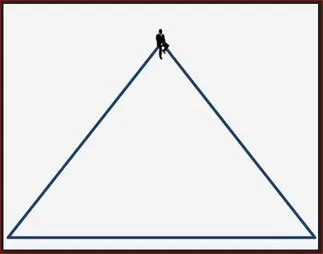
In 2017, LuLaRoe was formally accused of being a pyramid scam in a class-action suit in California.
In 2019, The Attorney General of Washington state accused them of being one and filed a lawsuit against them.
There’s too much smoke coming from the gun. So yes, I believe they are a pyramid scam. Still, before the Federal Trade Commission (FTC) formally declares the company a pyramid, we have no right to label any business this.
Has LuLaRoe Gone Out Of Business?
They are still in business, but they have suffered a sharp downward trend since the spate of lawsuits and complaints.
How Much Does It Cost To Become A LuLaRoe Consultant?
The Start-Up Kit would set you back between $5,000 and $6,000. Your initial stocks will run about $4,900, and you’ll need to put aside another $500 for other startup expenses like hangers, extra closet space, business cards, a website, etc.…
The starter kit generally features 75 Cassie Skirts, 58 Julia Dresses, 75 Irma Tops, 78 Classic Tees, and 70 pairs of Leggings, among other things. When you buy 300 or more items in your initial stocks, you will also get 25 free items of your choosing.
Many LuLaRoe fashion consultants recommend selecting a higher-priced product that is a fast up-sell, such as the Monroe Kimono, as your free item. When you’ve sold them all, you’ll have made an additional $1,100. A total of 381 items will be shipped to you. The total retail value of all of these products is around $12,500.
Rates vary from $8.50 to $31 at wholesale, with proposed retail prices ranging from $18 to $65 at retail. Items come in a range of designs, colors, prints, and fabric designs, and you’ll get a mix of clothes and body types based on your preferences. Sizes for adults range from 0-26, while girls’ sizes range from 2-14.
LuLaRoe covers all shipping charges, and orders are delivered within 3 business days of receipt of payment.
What Are The Common Complaints From Customers Faced By LuLaRoe?
Complaints against the quality of their clothes and being a pyramid scam are the most trending complaints recently.
Does LuLaRoe Have A Refund Policy?
The change in their Refund Policy was one thing that upset a lot of fashion consultants. Previously, a fashion consultant might get a full refund on all returned inventory if they were to cancel their agreement. They now only offer a partial refund or charge a fee for returns.
Pros and Cons of Selling LuLaRoe
Pros
- You can work flexible hours.
- It can be fun and exciting to see and touch new clothes.
Cons
- The cost of starting this business is very high. Theirs is perhaps one of the most expensive startup packages I’ve ever seen. To start this business, you’ll need at least $5,000. You’ll get clothing inventory for $5,000, and it’ll just become a stockpile. Remember to meet the monthly purchase requirement to qualify for bonuses and commissions too!
- The invested money is sleeping. If you look at new MLM companies, you will see that they do not need you to keep inventory. All you have to do is order them, and they will deliver them to your customers on your behalf.
On the other hand, if you order repeatedly, your room will end up overflowing with stock supplies. All of your assets will be tied, and if you are unable to sell them for an extended period of time, it will be a misery for you.
- Too many lawsuits!
Recommendation

I recommend that you don’t join this business. There are a plethora of issues going wrong in this company. The ordinary worker is unlikely to have $499 to spend on clothing for a business. If owning a business is valuable to you, look into being a consultant in other MLM opportunities.